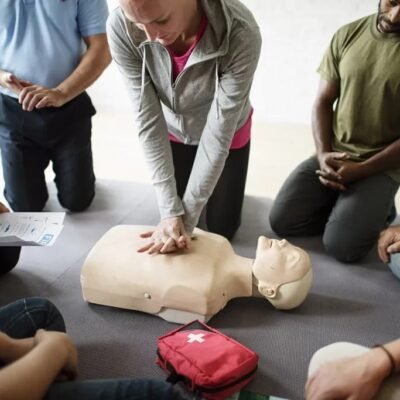“Good learning begins with questions, not conclusions.”
To solve problems on a daily basis, both at work and in the classroom, critical thinking is necessary. For students to be successful in the 21st century, it is an essential talent. To be able to make educated decisions, one must be able to evaluate, analyze, and synthesize information. In the classroom, critical thinking abilities can be taught using Bloom’s Taxonomy framework. In this article, we’ll look at the advantages of using Bloom’s Taxonomy as a teaching tool for critical thinking as well as how it may be utilized to teach it.
Critical Thinking Pedagogy
The science and practice of teaching are known as pedagogy. The term “Pedagogy” refers to educational practices that support kids in acquiring critical thinking abilities. A pedagogical framework for teaching critical thinking is Bloom’s Taxonomy. It is a hierarchical model that divides cognitive complexity into six categories: remembering, applying, comprehending, analyzing, evaluating, and generating. Teachers can create classes that interest children at various degrees of cognitive complexity by using Bloom’s Taxonomy, ensuring that they develop critical thinking abilities.
Advantages Of Critical Thinking Instruction
- Better Learning Results
By ensuring that students acquire the abilities they need to succeed, teaching critical thinking using Bloom’s Taxonomy can help to enhance learning outcomes. Teachers can create classes that interest students at various levels of cognitive complexity by using Bloom’s Taxonomy, ensuring that they comprehend and remember the content.
- Enhanced Collaboration Capabilities
By fostering a collaborative learning environment where students work together to attain a common objective, Bloom’s Taxonomy based critical thinking instruction can aid in the improvement of cooperation abilities. Teachers can give students the chance to cooperate, learn from one another, and build critical social skills by utilizing pedagogical techniques like cooperative learning and peer evaluation.
- Students Are More Engaged
By making classes more engaging, entertaining, and relevant, teaching critical thinking using Bloom’s Taxonomy can assist to boost student engagement in the classroom. Teachers can create a learning environment that is interesting and pleasurable for students by utilizing pedagogical tactics including project-based learning, flipped classrooms, and gamification.
- Improved Critical Thinking Capabilities
By encouraging students to think carefully about ideas, analyze data, and solve problems, teaching critical thinking using Bloom’s Taxonomy helps improve students’ critical thinking abilities. Teachers can assist students in acquiring the abilities they need to think critically and solve complicated problems by utilizing pedagogical tactics like inquiry-based learning and problem-based learning.
- Better Assessment Techniques
By ensuring that assessments are in line with learning objectives and are created to accurately measure student development, Bloom’s Taxonomy can be used to teach critical thinking and so contribute to the improvement of assessment practices. Teachers can design exams that give students useful feedback and support them in developing their critical thinking abilities by utilizing pedagogical tools like formative assessment and self-assessment.
Teaching With Bloom’s Taxonomy
Teachers can create lessons that engage students at various levels of cognitive complexity by using Bloom’s Taxonomy in the classroom. For instance, the following could be the format for a history lesson:
- Knowledge: The ability to recollect pertinent information that has been previously taught in order to produce factual (often correct or incorrect) answers. Use words and phrases like “how many”, “when”, “where”, “list”, “define”, “tell”, “describe”, “identify”, etc. when posing questions to elicit factual responses while evaluating students’ recollection and recall.
- Understanding: Grasping the meaning of written or spoken information. Use phrases like “describe,” “explain,” “estimate,” “predict,” “identify,” and “differentiate” when posing questions to nudge students towards interpretation, extrapolation, and translation.
- Application: Using previously obtained knowledge (or information) in novel or unfamiliar settings. Encourage students to apply their knowledge to novel and unfamiliar situations by using phrases like “demonstrate,” “apply,” “illustrate,” “show,” “solve,” “examine,” and “classify” while posing questions.
- Analysis: Dissecting the components of information or looking at its organization. Use words and phrases like “what are the differences,” “analyze,” “explain,” and “compare” when posing questions to nudge pupils towards segmenting information.
- Synthesis: the process of combining materials into a pattern using existing knowledge and skills. Use terms and phrases like “combine,” “rearrange,” “substitute,” “create,” “design,” “invent,” and “what if” when posing questions to urge students to put things together in novel ways.
- Evaluation: Making a determination based on a set of standards without regard to whether a choice is correct or incorrect. Use phrases like “explain,” “conclude,” “compare,” and “sum up” when posing questions to nudge students toward making decisions based on a set of standards.
You as a faculty member are limited in how you can run the online classes. You can’t tell from the virtual classroom whether the students are paying attention or are just there for the name of the class. Team MasterSoft provides you with a learning management system (LMS) built on the foundation of all the factors described in Bloom’s Taxonomy to assist you in making a difference in the digital world. Contact Us to book a free demo now!



